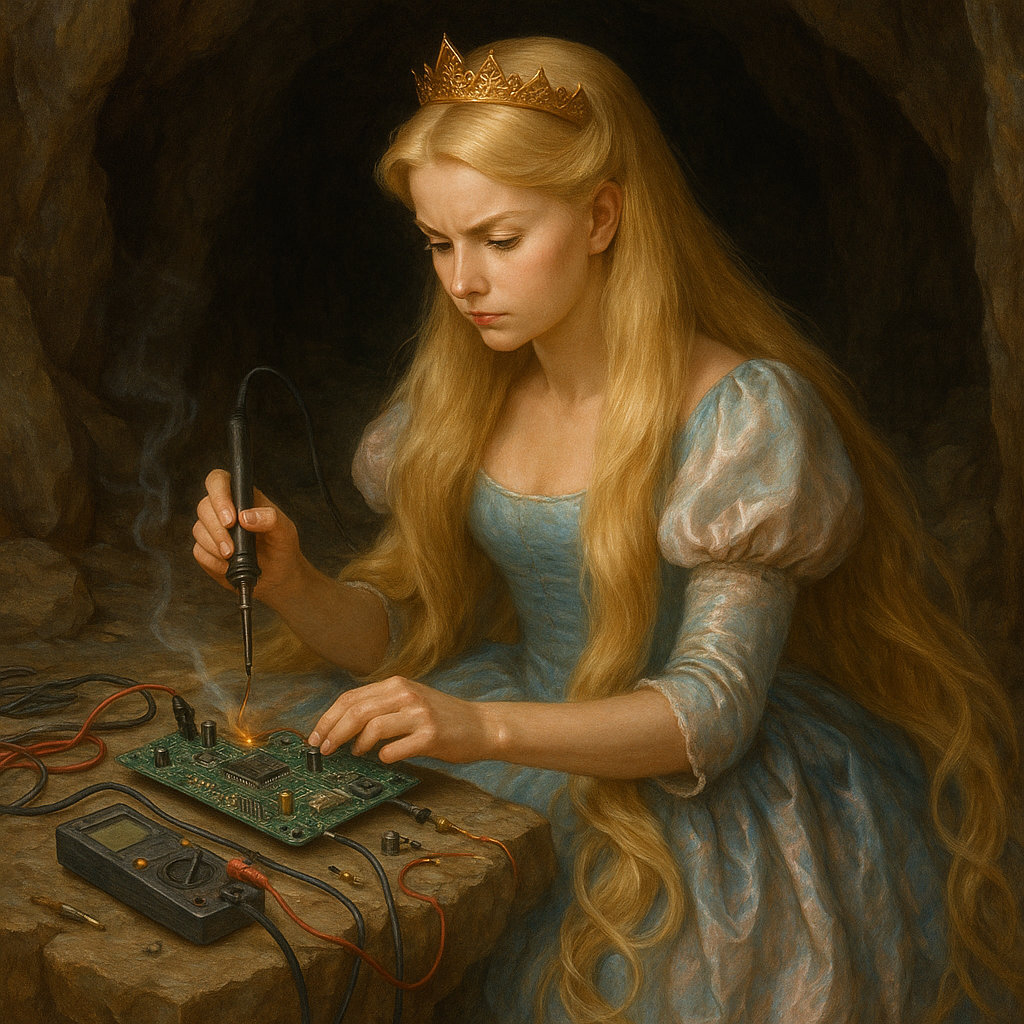illphated
In the neon-drenched sprawl of New Dublin, Connor O’Malley, a freckled boy with a wild mane of auburn hair, and Astrid, his soft-spoken blonde girlfriend, were known for one thing: trying to grow an olive tree in a city that hadn’t seen real soil in decades.
The olive tree had started as a gift from Connor’s late grandmother, a seed wrapped in an ancient cloth with instructions written in Gaelic. “Plant this when the world feels too artificial,” she’d said, her voice frail but mischievous.
They found a spot in the labyrinthine alleys behind their apartment block, where rain occasionally pooled and the glow of holographic billboards didn’t reach. Using hacked grow-lamps scavenged from a biotech lab, they planted the seed in a patch of nutrient-rich soil they’d traded for at a black-market bazaar.
Against all odds, the tree sprouted. Its leaves shimmered faintly, absorbing the city’s neon glow. By the third week, it grew faster than they anticipated, its roots curling around sewer pipes and its branches creeping skyward.
“It’s too big, Connor,” Astrid whispered one evening, her voice barely audible over the hum of hovercraft overhead. She looked up at the tree, its canopy now brushing against the base of a giant holo-sign advertising synthetic sushi. “The landlords are going to notice.”
Connor grinned, his emerald eyes sparkling. “Good. Let them notice. This city needs a reminder of what’s real.”
But the tree had its own plans. By the end of the month, its trunk had split the alleywide, lifting a steel dumpster like it was paper. The branches now cast long, organic shadows across the concrete jungle. And then, it happened.
The tree bloomed.
Thousands of tiny flowers glowed like lanterns, their scent cutting through the chemical staleness of the city. Crowds gathered. Residents who hadn’t stepped outside in years emerged from their neon cages to see the miracle.
“What is it?” a child asked, pointing at the tree.
“It’s hope,” Astrid replied softly, clutching Connor’s hand.
But not everyone was pleased. New Dublin’s corporate overlords, the megacorp NeonArc, sent drones to investigate. They labeled the tree a “biohazard,” an affront to their perfectly controlled, artificial ecosystem.
One night, under the cover of acid rain, a team of enforcers arrived with flamethrowers. Connor and Astrid stood beneath the tree, defiant.
“You can’t stop it,” Connor shouted, his voice echoing through the alley.
The enforcers raised their weapons, but the tree responded. Its glowing branches moved with unnatural grace, disarming the attackers and scattering their equipment. Roots tore through the pavement, spreading life into the dead city.
Within days, the olive tree’s influence had transformed the block. Greenery sprouted where there had been none, and people started tearing down the holographic billboards to let the sun reach the ground.
Connor and Astrid became legends in New Dublin—a boy and his blonde girlfriend who grew a tree that was too big, too wild, and too beautiful for a world of metal and glass.
And in the years to come, when children asked where the first tree of New Dublin’s Green Revolution came from, their parents would smile and point to the massive olive tree at the heart of the city.
“It all started with a boy, a girl, and a seed.”
EmailURL







xc680o